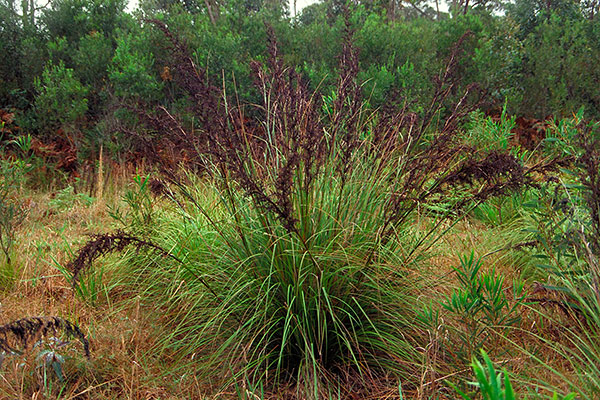General Description:
Gahnia is a genus of about 30 species with around 20 being native to Australia. They are mostly large, robust sedges with long, arching leaves. The common name “saw edge” refers to the rough edges of the leaves which can cause a painful cut if handled carelessly. They are usually found in damp areas or in areas subject to periodic inundation.
Gahnia sieberana is one of the most commonly seen members of the genus. It can form very large clumps 1.5 to 2 metres in diameter with flowering stems reaching 3 metres. The flowers occur in spring and summer at the ends of the stems in long clusters (pannicles) and are black in colour. The flowers are followed by shiny, red-brown seeds about 4 mm long.
Gahnia species are not often seen in cultivation, mainly due to difficulties in propagation.
G.sieberiana is probably the most commonly cultivated species and it is an excellent substitute for the widely planted “Pampas Grass” (Cortaderia selloana) which is an environmental weed in many parts of Australia. It is hardy in most soils and climates but grows best if given plenty of water. The flowering spikes make excellent floral decoration either fresh or dried.
Propagation of G.sieberiana can be carried out by division of established clumps. Most species of Gahnia are difficult to propagate from seed – G.sieberiana is easier than most although germination can be unreliable. Research carried out by the Botanic Gardens of Adelaide Seed Conservation Centre in conjunction with Forestry South Australia indicates that germination was promoted in G.sieberiana with the application of heat and smoked water, followed by incubation under summer temperature conditions (Playford Trust News, March 2009).

Gahnia sieberana
Photo: Brian Walters
 Australian Native Plants Society (Australia)
Australian Native Plants Society (Australia)













